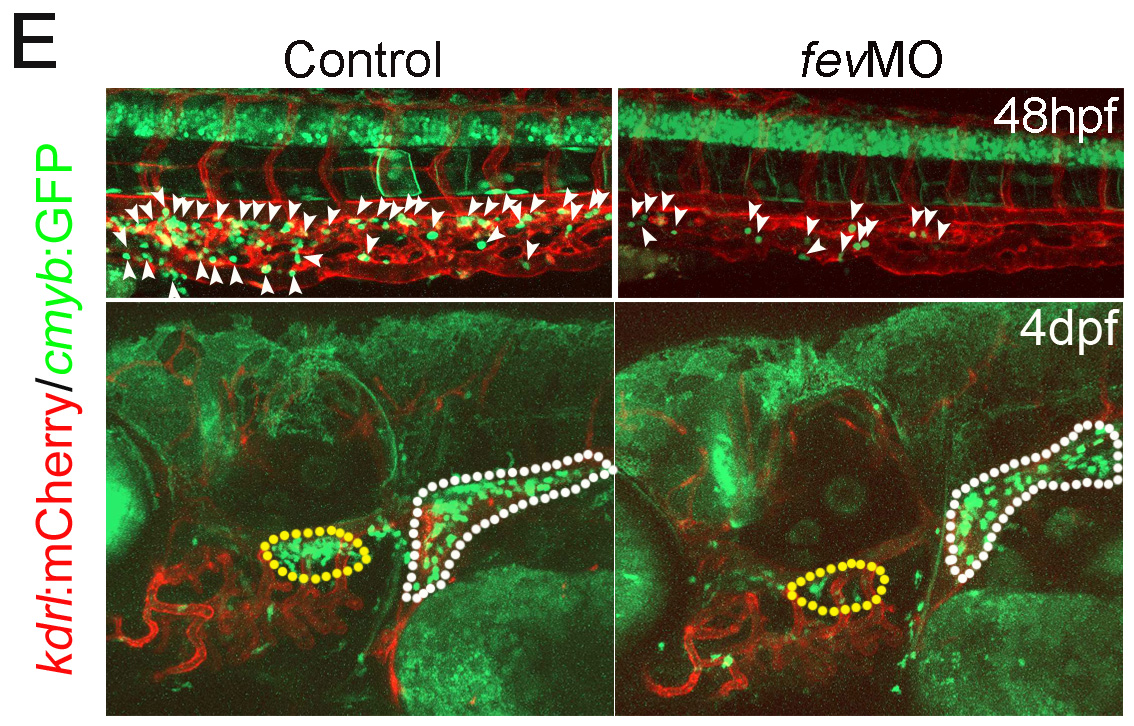Hematopoietic stem cells (HSCs) can give rise to all blood lineages, including erythroid (erythrocyte), myeloid (macrophage, neutrophil, monocyte), and lymphoid (B cell and T cell). HSC transplantation has been successfully applied in the clinic to treat hematological diseases such as leukaemia. However, the shortage of sources (mainly compatible bone marrow) has restricted its application worldwide. Production of transplantable HSCs in vitro holds great promise for solving this issue but has not been achieved successfully from embryonic or induced pluripotent stem cells, or by defined factors. Therefore, full understanding of molecular mechanisms of HSC development in vivo is critical for regenerative medicine application of HSCs expanded ex vivo or in vitro.
Hematopoiesis and cardiovascular development group led by Prof. Feng Liu, State Key Laboratory of Biomembrane and Membrane Biotechnology, Institute of Zoology, Chinese Academy of Sciences, has demonstrated that a new ETS transcription factor, Fev, plays a pivotal role during HSC development in zebrafish embryos and human cord blood. Knocking down of Fev by antisense morpholinos can attenuate HSC and T cell development in zebrafish. Fev genetic mutant zebrafish generated by TALEN displayed similar phenotypes. Function studies suggest that Fev regulates HSC development through direct regulation of ERK signaling. Transplantation experiments using zebrafish blastula confirmed that Fev acts cell-autonomously. Experiments performed with purified cord blood show that Fev is expressed and functions in primitive HSCs in humans, further supporting its conserved role in higher vertebrates.
This work was published in BLOOD ahead of print on April 16, 2013
This work was supported by grants from the National Basic Research Program of China (2010CB945300, 2011CB943900), the National Natural Science Foundation of China (30971678), and the Strategic Priority Research Program of the CAS (XDA01010110) l.
Figure. Fev is required for hematopoietic stem cell development.

